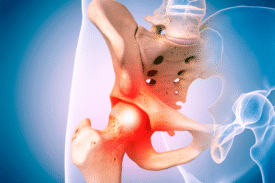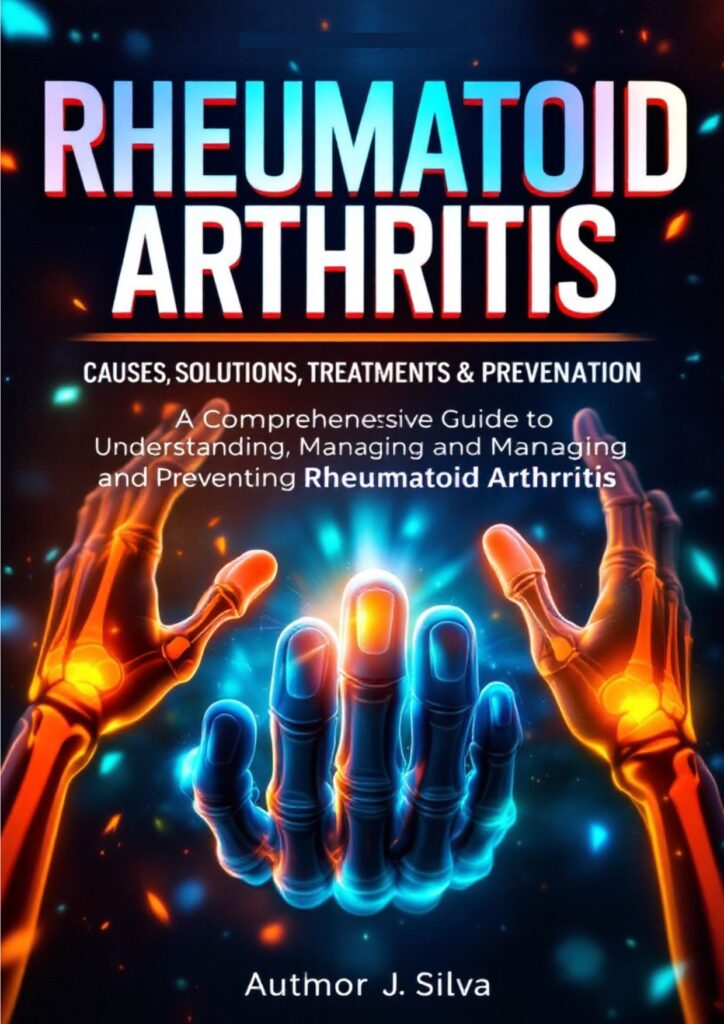
Introduction
Inflammatory arthritis refers to a category of joint disorders characterized by inflammation, pain, swelling, and sometimes systemic features. Unlike “wear-and-tear” osteoarthritis, inflammatory arthritis involves active immune and inflammatory processes. Whether you’re trying to understand juvenile rheumatoid arthritis, seeking effective ra treatment, or looking for self care strategies, this article explores the full landscape—causes, symptoms, diagnosis, therapies, and living well with this condition.

Understanding Inflammatory Arthritis
What is Inflammatory Arthritis?
Inflammatory arthritis includes various forms of arthritis in which immune-mediated inflammation plays a central role. It often presents with joint pain, swelling, warmth, redness, and morning stiffness lasting more than an hour. It may also involve other organs and systemic symptoms.
Common types include:
- Rheumatoid arthritis (RA)
- Psoriatic arthritis
- Ankylosing spondylitis / axial spondyloarthritis
- Juvenile idiopathic arthritis
- Reactive arthritis, gout, lupus arthritis in some cases
One challenge is differentiating inflammatory arthritis from non-inflammatory forms (like osteoarthritis). In inflammatory forms, symptoms often improve with movement, and lab/imaging signs of inflammation are present.
Early Signs and Symptoms of Inflammatory Arthritis
Typical Clinical Features
You may notice:
- Pain, swelling, warmth in one or more joints
- Morning stiffness lasting ≥ 1 hour
- Joint stiffness after rest
- Symmetric involvement (especially in RA)
- Fatigue, malaise, low-grade fever
- Reduced joint range of motion
- Joint tenderness on palpation
Because it’s systemic, extra-articular symptoms may occur: eye inflammation, skin rashes, lung or heart involvement, or general constitutional signs. CENIBio
Juvenile Form: Juvenile Rheumatoid Arthritis
In children, juvenile rheumatoid arthritis (also called juvenile idiopathic arthritis) is a major subtype of inflammatory arthritis. It presents with joint swelling, pain, limping, fatigue, and sometimes fever/rash. The onset before age 16 helps distinguish it.
Children may not always verbalize symptoms, so signs include reluctance to play, limping, stiffness in the morning, or reduced activity.
Causes and Risk Factors
Immune Dysregulation
At its core, inflammatory arthritis stems from a malfunctioning immune system. The synovium (lining of joints) becomes inflamed by immune cells—T cells, B cells, macrophages—releasing cytokines like TNF-α, IL-1, IL-6, and others.

Genetics & Environment
Certain genes (HLA variants, PTPN22, etc.) raise susceptibility. Environmental triggers—such as infections, smoking, or microbiome imbalances—may precipitate disease onset in genetically predisposed individuals.
Rheumatoid Factor & Autoantibodies
In many cases, autoantibodies such as rheumatoid factor or anti-CCP help identify RA as a subtype. Their presence often implies a more aggressive or systemic form of arthritis.
Additional Risk Factors
- Smoking
- Obesity
- Sex: women are more affected in many forms
- Age (though juvenile type is in children)
- Other autoimmune predispositions
Diagnosis and Testing
Clinical Assessment
A rheumatologist or physician first gathers a detailed history (duration, pattern, symmetry of symptoms) and performs a thorough joint exam.
Red flags include:
- Prolonged morning stiffness
- Swelling of multiple joints
- Systemic symptoms
- Rapid progression
Laboratory Tests
Key lab studies include:
- ESR, CRP (inflammatory markers)
- Rheumatoid factor (RF)
- Anti-CCP (especially for RA)
- ANA, HLA-B27 (for related types)
- Complete blood count, metabolic panel
One review emphasizes that inflammatory arthritis is primarily a clinical diagnosis supported by labs: lab tests must be interpreted in context to avoid false positives. PMC
Imaging and Advanced Diagnostics
- X-rays for joint damage, erosion
- MRI/ultrasound to detect synovitis, early changes
- Bone scans in some cases
- Joint aspiration to rule out infection or gout
These tests help confirm the diagnosis, classify the subtype, and guide treatment.
Treatment Options for Inflammatory Arthritis

Goals of Therapy
- Control inflammation and pain
- Prevent structural damage
- Preserve joint function
- Support quality of life and minimize side effects
Standard and Advanced Therapies
- NSAIDs & Corticosteroids
- For symptomatic relief
- Steroids may be used short-term or intra-articularly
- Conventional DMARDs
- Methotrexate, sulfasalazine, leflunomide
- Often first-line in RA and many inflammatory arthritides
- Biologics & Targeted Therapies
- TNF inhibitors, IL-6 inhibitors, JAK inhibitors, others
- Especially useful when conventional DMARDs don’t suffice PMC
- Adjunctive Measures
- Physical and occupational therapy
- Lifestyle interventions (diet, exercise)
- Pain control measures (heat, cold, topical agents)
Often combination therapy is used, and treatments are adjusted over time based on response and side effects.
Get Your Ultimate Guide to Rheumatoid Arthritis Now!
Are you struggling with rheumatoid arthritis or worried about the early signs of RA? Don’t wait until the pain gets worse! Our comprehensive eBook, Rheumatoid Arthritis: Causes, Solutions, Treatments & Prevention, is your complete guide to understanding RA, managing symptoms, and preventing joint damage.
Inside this eBook, you’ll discover:
- Detailed explanations of rheumatoid arthritis symptoms and RA symptoms
- Proven strategies for rheumatoid arthritis treatment
- How to recognize early signs of rheumatoid arthritis before serious damage occurs
- Lifestyle tips, exercises, and diet plans for arthritis in fingers and other affected joints
- Expert advice for living a healthy, active life with RA
Don’t let rheumatoid arthritis control your life! Take the first step towards relief and empowerment.
Click here to get your eBook now!
Why you need this eBook:
- Easy-to-understand language, perfect for anyone dealing with RA
- Actionable solutions and preventive measures you can implement today
- Professional, science-backed guidance from experts in autoimmune health
Take control of your health—get your copy today and start managing your RA like a pro!
RA Treatment Specifics
In RA subtypes of inflammatory arthritis, focus is often on early initiation of DMARDs to prevent joint erosion. Monitoring for rheumatoid factor positivity and extra-articular manifestations is standard. CENIBio+1
Living with Inflammatory Arthritis: Self-Care & Lifestyle
Daily Self-Care Strategies
- Gentle, regular exercise to maintain flexibility
- Proper rest and pacing to avoid flares
- Joint protection techniques (assistive tools, ergonomics)
- Stress management (meditation, counseling)
- Balanced, anti-inflammatory diet
Managing Fatigue
Fatigue is a common complaint in inflammatory arthritis. Approaches to reduce fatigue include prioritizing tasks, getting quality sleep, and adjusting treatment.
When to See a Specialist
If symptoms persist > 6 weeks, worsen, or include systemic signs, seeking a rheumatoid arthritis doctors near me or specialist is crucial.
Discover Natural Relief for Your Joints with JointVive
If you’ve been searching for a natural, effective way to restore joint comfort and flexibility, JointVive could be exactly what your body needs.
Unlike anything you’ve tried before, JointVive is powered by a unique, closely guarded formula crafted to support joint comfort, flexibility, and overall mobility.
With its potent blend of rare, premium-quality ingredients, it works from within to help reduce stiffness, soothe discomfort, and promote long-term joint health — so you can move freely and live without limits.
Take the first step toward lasting relief — try JointVive today and feel the difference for yourself!
FAQ – Common Questions About Inflammatory Arthritis
Q1: Can inflammatory arthritis be cured?
A1: There is currently no cure, but many patients achieve remission or low-disease activity with modern therapies.
Q2: How is juvenile rheumatoid arthritis different from adult types?
A2: It occurs in children (before age 16) and may affect growth, bone development, and presents slightly differently in joints and symptoms.
Q3: What role does rheumatoid factor play in inflammatory arthritis?
A3: RF is a useful marker, especially in RA, but is not definitive. It helps in diagnosis, prognosis, and subclassification.
Q4: Do NSAIDs alone manage the disease?
A4: No — NSAIDs relieve symptoms but do not prevent joint damage. They are adjuncts rather than core therapy.
Q5: When should I see a doctor?
A5: Persistent joint swelling, stiffness >1 hour in the morning, systemic symptoms, or worsening condition indicates prompt medical evaluation.
Conclusion
Inflammatory arthritis is a complex, immune-driven category of joint diseases requiring astute diagnosis, timely treatment, and ongoing self-care. Whether you’re exploring juvenile rheumatoid arthritis, seeking ra treatment, or managing fatigue and symptoms, understanding the mechanisms, signs, and therapies is vital. With modern medicines, multidisciplinary care, and lifestyle strategies, many people lead active, fulfilling lives despite this condition.
If you’re experiencing symptoms consistent with inflammatory arthritis, reach out to a rheumatologist or specialist and get a proper evaluation as soon as possible.
SEE ALSO: Juvenile Rheumatoid Arthritis: A Comprehensive Review
Disclaimer: This article is for informational purposes only and does not replace the advice of a healthcare professional. Consult a doctor or nutritionist before starting any supplementation. Some links in the text are affiliate links, which means we may receive a commission if you make a purchase. This does not impact the price for you and helps us continue to bring you quality content.


Um comentário em “Inflammatory Arthritis: A Comprehensive Review”